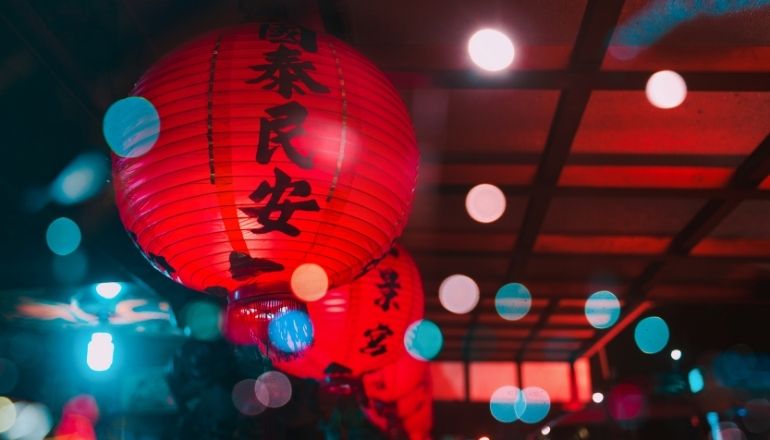The Chinese Personality Assessment Inventory (CPAI)
With references to Western personality tests, the CPAI was developed as an indigenous personality inventory for Asians, specifically the Chinese 1. Being a Chinese-relevant instrument 2, it was intended to be an inventory that would suit the local needs and identify the culturally-unique dimensions 1. This makes sense if you think about because sometimes, Western cultures do not reflect the mentality of us Asians. Being a collaborative project between psychologists from Hong Kong and China, the dimensions/constructs in CPAI were derived from many things: Chinese adjectives, daily-life experiences, Chinese literatures, and Chinese proverbs 1. As there are about 38 constructs in CPAI 1, only few constructs that are seen as unique to the Chinese culture will be discussed.
The CPAI constructs
Family Orientation (亲情 Qīn qíng)
Being a collectivistic culture, this construct is undoubtedly the most fundamental value in not only Chinese but most Asian communities 2. This construct is on how closely bonded is a person to his/her family. It denotes the sense of family solidarity where the familial bond is considered the provider of emotional and material support 2. Hence the popular Chinese proverb “家和万事兴’ (jiā hé wàn shì xīng) meaning family that lives in harmony will prosper.
Those high in family orientation are3 : filial-pious; values family bonding; takes good care of the family; values harmony in the family; positive relations between parents and children
Relationship Orientation (人情 Rén qíng)
Deemed as a more complicated social relationship concept in the Chinese culture 2, this construct is more on the concept of quid pro quo. Think Chinese people hate being indebted. If you are good to me, I need to be good to you too. It basically measures the person’s adherence to the Chinese cultural norm of social exchange 2. It involves forms of interactions like courteous rituals or exchange of resources like money, information, service and status 2.
Those high in relationship orientation are3 : values old friendships; interpersonally sensitive; courteous; takes the initiative to strengthen interpersonal relationships; caters to others’ wishes; may forsake one’s own principles in the effort to attend to others’ demands
Face (面子 Miàn zi)
This perhaps be the most relatable construct to the Chinese communities. It relates what we all usually are concerned about, which is ‘losing face’. It is said that this is a dominant concept in regulating social behavior in the Chinese culture 2. This construct has a lot to do with social behaviors that enhance one’s own face and that avoid losing one’s face 2. In some sense, one can say that it is how one thinks and acts to prevent embarrassment and get better self-esteem. Examples would be dressing better or giving better gifts so that people will have better perception on us.
Those high in face are 3: concerned about face; loves to show off; strong sense of self-respect; pays excessive attention to social recognition; self-conscious
Defensiveness (精神胜利 Jīng shén sheng lì)
Also known as Ah-Q Mentality (阿Q精神 Ā Q jīng shén), this construct is based on the defense mechanisms portrayed by Ah-Q, a popular fictional character in an early 20th century Chinese literature 2. Some of the defense mechanisms are self-protective rationalizations, externalization of blame, self-enhancement and belittling other’s achievements 1. In ‘The True Story of Ah-Q’ (Lu, 1976), Ah-Q was meant to be means to satire the traditional Chinese peoples’ personality shortcomings 2. However, it is said that a mild extent of this construct is usually accepted as a method to deal with defeat and disappointment 2.
Those high in defensiveness are3 : likes to boast; passive-aggressive; likes to show off accomplishments; bullies the weak and fears the strong; lacks the courage to confront failure; indulges in fantasies to comfort oneself; rationalizes to conceal one’s sense of inferiority; tends to be narrow-minded
Harmony (和諧性 Hé xié xìng )
Harmony in this case points to a person’s inner peace, interpersonal harmony, contentment and conflict avoidance 1. Some might say it is about how ‘Zen’ you are. Chinese social psychologist opine that it is in the Chinese culture that equilibrium should be uphold. This could be the reason why Chinese are so keen in balancing yin and yang, as disharmony is believed by Chinese people to create negative energy.
Those high in harmony are3: values harmony; willing to sacrifice to make peace; makes concessions to appease others; non-competitive; maintain peaceful relations with others; calm and serene.
Written by: Ryan Wong (Aizen) (MPS Psychological Services Intern)
Supervisor: Mr. Liang Yaw Wen
References:
- Cheung, F. M., Leung, K., Zhang, J. X., Sun, H. F., Gan, Y. Q., Song, W. Z., & Xie, D. (2001). Indigenous Chinese personality constructs: Is the five-factor model complete?. Journal of Cross-Cultural Psychology, 32(4), 407-433. https://doi.org/10.1177/0022022101032004003
- Cheung, F. M., Leung, K., Fan, R. M., Song, W. Z., Zhang, J. X., & Zhang, J. P. (1996). Development of the Chinese personality assessment inventory. Journal of Cross-cultural psychology, 27(2), 181-199. https://doi.org/10.1177/0022022196272003
- Cheung, F. M., Kwong, J. Y., & Zhang, J. (2003). Clinical validation of the Chinese personality assessment inventory. Psychological Assessment, 15(1), 89. https://doi.org/10.1037/1040-3590.15.1.89























